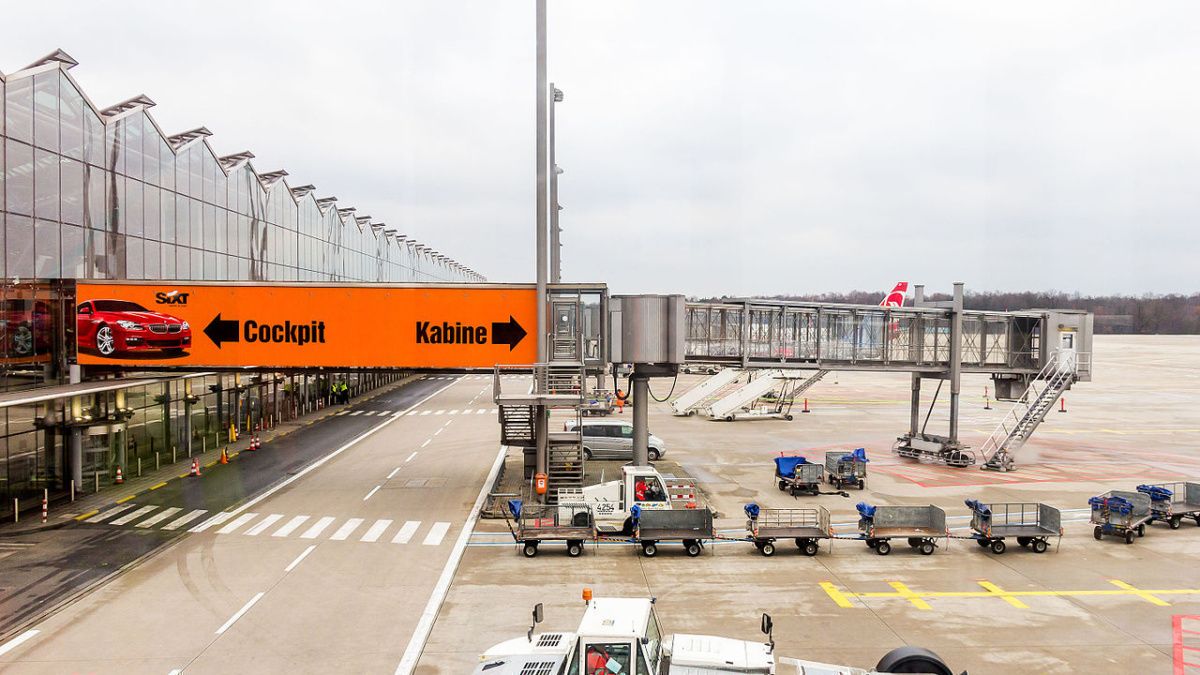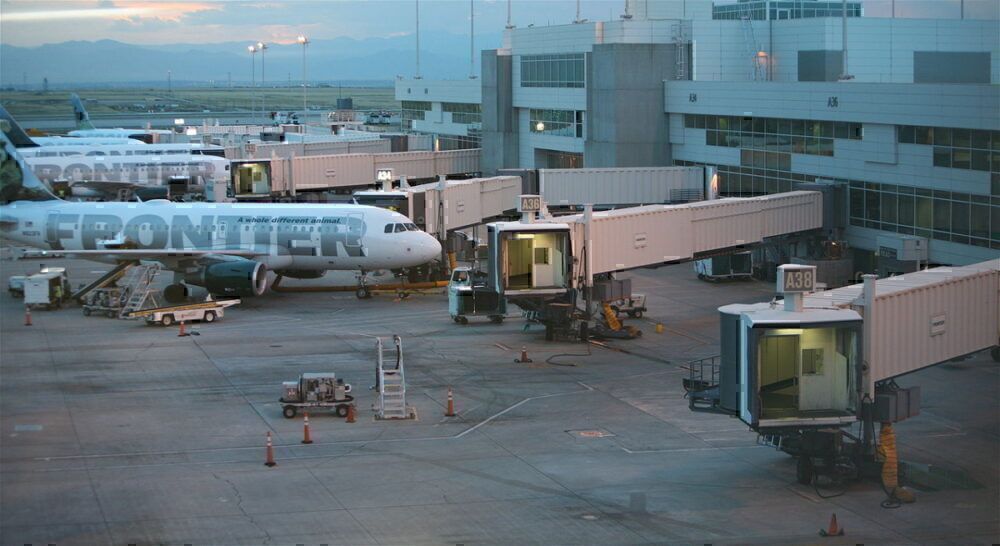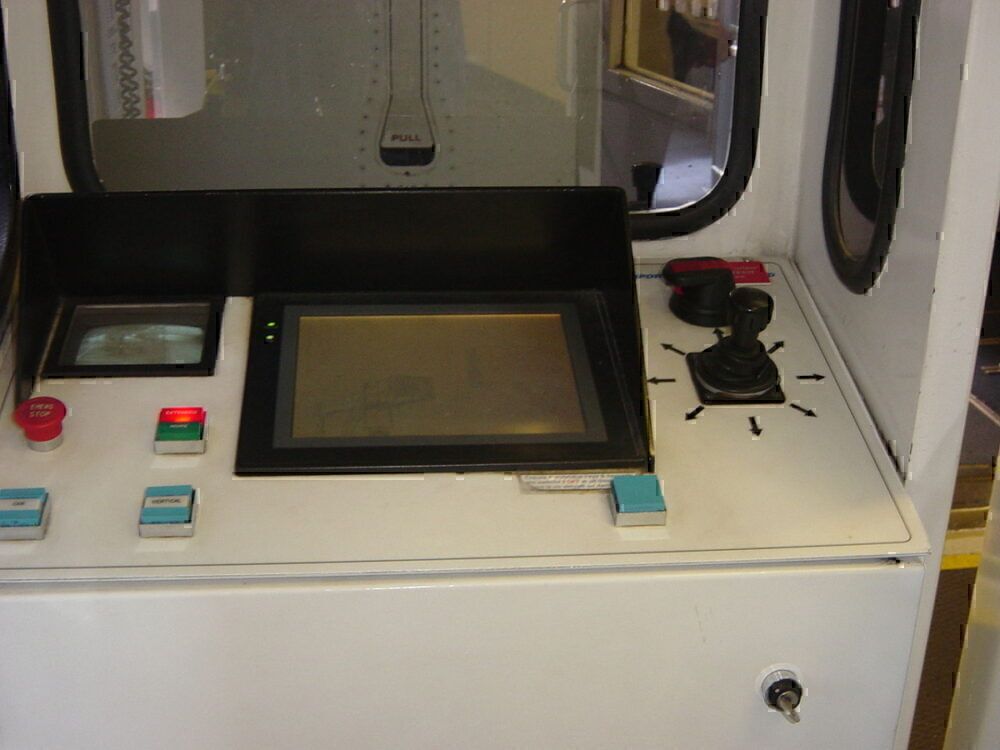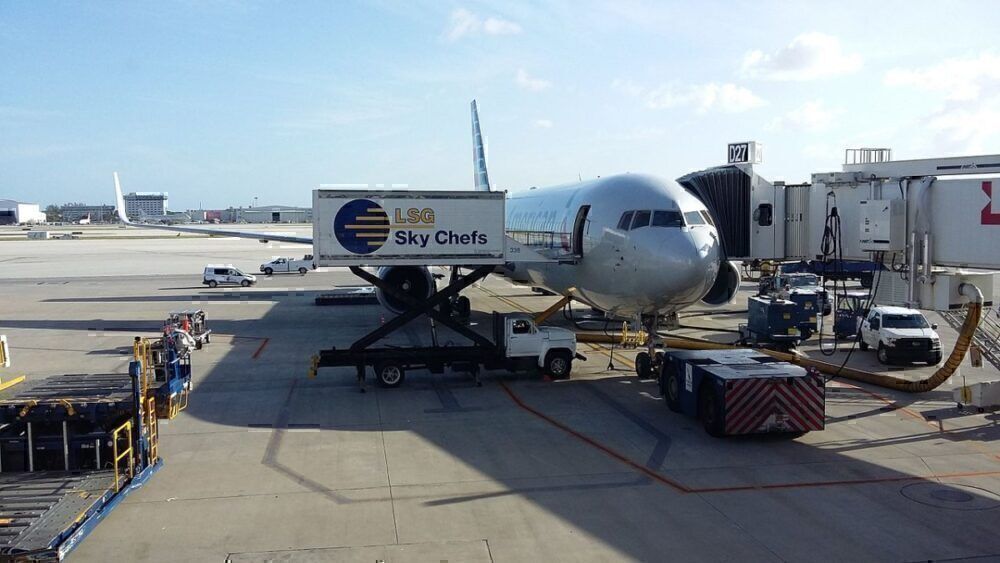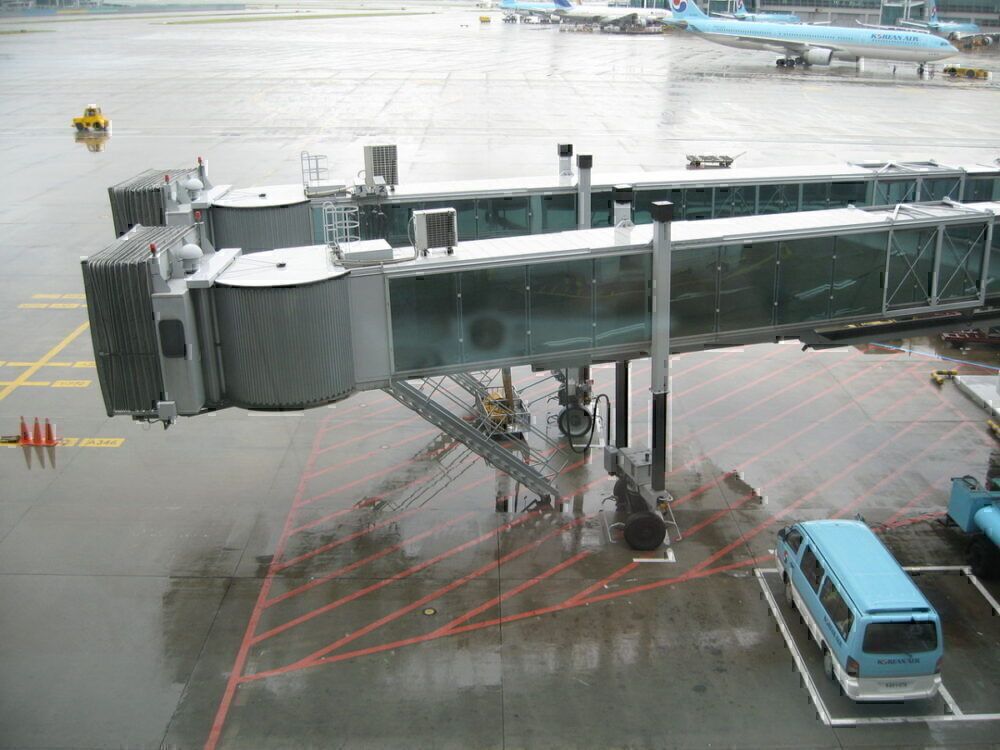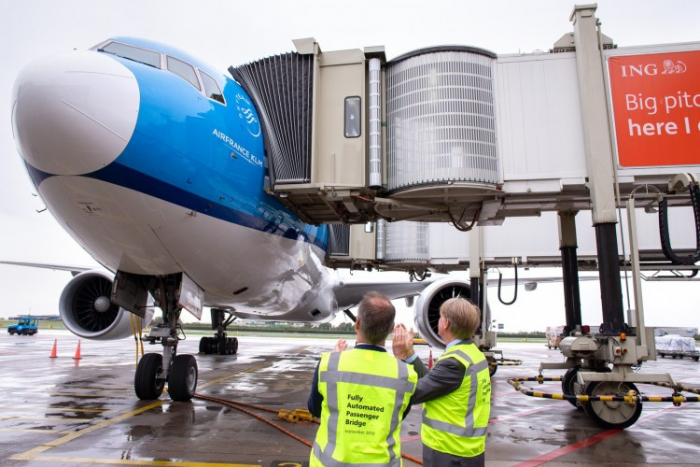The jet bridge is not something passengers normally pay attention to when rushing onto or off an aircraft. It is an important development though, greatly assisting safe, and fast, boarding of passengers. This article takes a brief look at how they work, and how the technology is improving.
The introduction of the jet bridge
Airports have not always had convenient jet bridges, and many smaller airports today still do not. This was, and is, not a problem. Moveable stairs remain in common use, and some aircraft have their own built-in stairs. It just takes longer, is not as convenient for passengers, and lengthens turnaround times.
The first jet bridges started to appear in 1959. United Airlines began experimenting with a fixed 'Air Dock' in 1954. This developed into the extending jet bridge design by 1959, with United Airlines installing them at New York JFK, Los Angeles and San Fransico airports. American Airlines soon did the same at San Francisco.
Garrett Macfarlane, regional sales manager for Ogden, a jet bridge manufacturer, explains in USA Today, how their use quickly expanded:
"Those first ones were very similar to what you see today — a series of telescoping tunnel sections with wheels... by the 1970s and '80s most every major airport had them."
Jet bridge operation
Technology and design of jet bridges have improved over the years, but they function in much the same way. The bridge needs to move out of the way to allow the aircraft to approach, then be extended and carefully maneuvered into place to allow safe and easy passage of passengers and crew.
Jet bridges are usually fixed at the terminal end, with the ability to pivot to the sides, although some longer ones will pivot at a middle point also. Depending on the design and length of the jet bridge, sections can be moved left and right, extended outwards to meet the aircraft, and lowered and raised.
Some jet bridges can also be moved at the terminal end. For example, to shift the bridge between separate arrivals and departures areas (this happens at Hong Kong International Airport, amongst others).
Most of these movement operations are controlled manually. You will likely have seen a small operator area, with control panels, at the aircraft end of jet bridges. This is a skilled task, quickly moving and aligning the jet bridge is important for both passenger safety and a fast turnaround.
All of the movement and aligning is handled by the moveable jet bridge. The arriving aircraft will align with marks on the ground, but will not shift after this.
Many jet bridges have automatic leveling functionality. This keeps the aircraft end of the jet bridge smoothly aligned with the aircraft door as the weight on the walkway changes.
Stay informed: Sign up for our daily aviation news digest.
Always on the left
Observant passengers may have noticed that jet bridges always connect to the left hand side of an aircraft. This is standard at airports around the world, and happens for a few reasons:
- Cargo and galley items enter from the right. The cargo doors are on the right hand side, and this makes it much easier to load cargo and passengers at the same time. Similarly, the aircraft will be fueled from the right side.
- The captain sits on the left. This gives them better vision of the jet bridge when lining up at the gate and when departing.
- Ships also board from the left. Ships will line up to board from gangways on the left hand side. Many aviation customs derive from maritime ones.
Multiple bridges
One of the biggest changes since the introduction of jet bridges has been to adapt the single bridge for aircraft with multiple doors. This is commonly seen on widebody aircraft, where one bridge is used for economy and another for premium cabins.
This changed again with the introduction of the A380. The two decks allow two separate jet bridges to be used for boarding each level. While one could of course be used, this would mean longer turnaround times, more time at the gate, and delays for passengers.
Many airports have had to build new jet bridges, and change gate areas, to handle the A380. London Heathrow for example spent £105 million ($134 million) adding a new pier in Terminal 3 to handle the A380's arrival in 2008.
Automating the jet bridge
Since 2018, automatic jet bridges have been introduced at a few airports. Rather than being controlled and aligned manually, these use a range of sensors and cameras to automatically align and dock with the aircraft. The advantage here is faster docking, and with it less waiting for passengers and possible quicker turnarounds.
It does not, at least for now, remove the need for human oversight for safety. Heavy jet bridges can be dangerous, and cause plenty of damage. Take a look at what happened for example when Hi Fly's A380 hit a jet bridge at Paris in 2018.
The first such automatic jet bridge was installed at Wellington International Airport in 2018, and trials began with KLM at Schipol Airport, Amsterdam in 2019. Wellington Airport provided the following statement to Simple Flying about the technology:
"lntellidock was first deployed in November 2018 at Gate 13 (mainly A320) and later on gate 26 (mainly 777-200). The technology works really well and exceeds our expectations. User error is now an issue of the past and the aero bridge gets docked in a similar timeframe almost every time which has a positive impact on the arrival experience and OTP."
Would you like to share any comments or experiences related to jet bridges? Have you seen any new automated jet bridges in use? Let us know in the comments.

